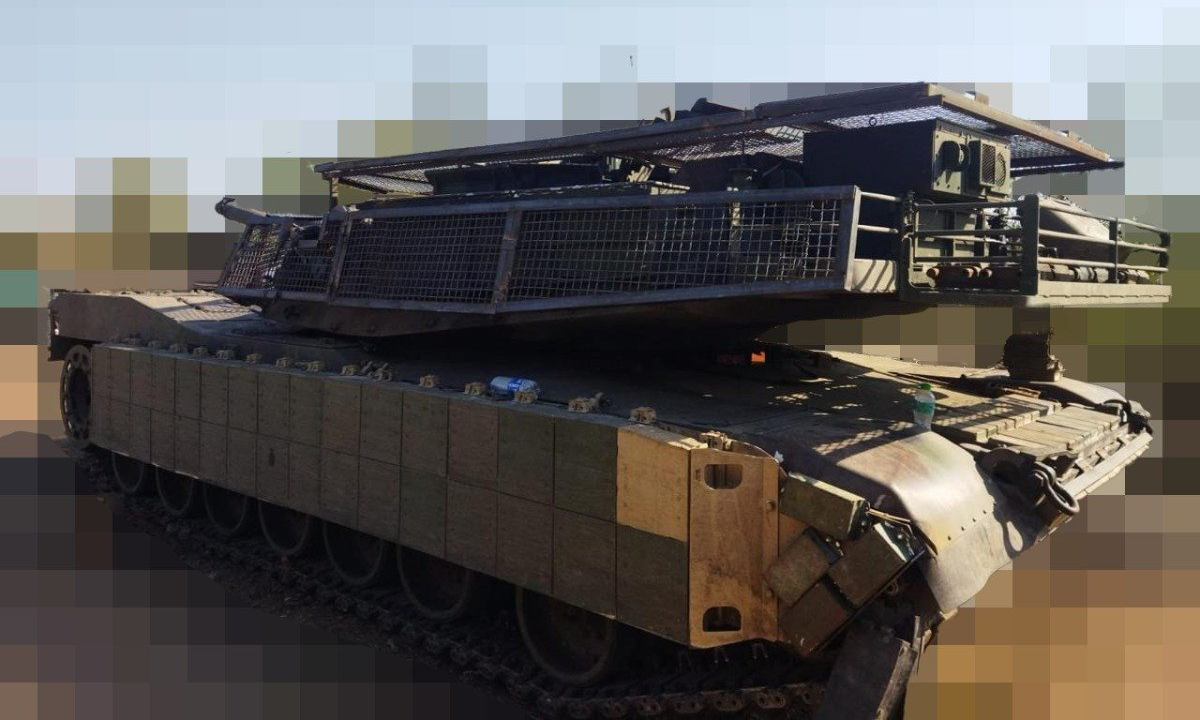In its budget proposal for the 2026 fiscal year released last week, the US army requested $92 million to purchase top-attack protection (TAP) kits for 1,528 tracked vehicles, including tanks and armored vehicles.
The TAP kits are slated for installation on all combat vehicles before being deployed on other vehicle types in the future. "The number of TAPs per vehicle will vary, depending on the thickness of the original armor and the location of the crew compartment," the proposal stated.
This is part of a $107 million Vehicle Protection System (VPS) package that includes laser warning sensors and exterior vehicle cladding to reduce infrared signature.
While the US army didn't detail the specifics of the TAP, Howard Altman of War Zone suggests it will likely resemble the cage armor currently used by several militaries to counter the threat of drones.
"This announcement follows warnings that the US military hasn't kept pace with the changing nature of modern warfare, nor adapted its armored vehicle capabilities and tactics based on lessons from the Ukraine conflict," Altman said.
 |
A Ukrainian Abrams tank fitted with cage armor in a photo from 2024. Photo: Metinvest |
A Ukrainian Abrams tank fitted with cage armor in a photo from 2024. Photo: Metinvest
Michael Liscano Jr., a retired US army major, acknowledged that no tank in the world, not even the M1 Abrams, has armor thick enough to withstand top-down attacks.
"Next-generation tanks are incorporating new defenses against drones. Cage armor, layered explosive reactive armor (ERA), or turret-mounted shields will continue to be utilized until more advanced defensive technologies are deployed," he said.
The Ukraine conflict has prompted many militaries to enhance both active and passive drone defenses for tanks, and to rethink tank design and tactics. This is especially critical for Western armies, which have centered their ground strategies around tanks for decades.
Cage armor first appeared on Russian tanks in 2021 as a stopgap measure against drones carrying explosives, a common threat in Iraq and Syria.
Russian tanks in Ukraine are equipped with substantial cage armor and steel mesh, likened to a turtle shell, to counter first-person-view suicide drones. This armor has become increasingly refined, moving beyond its initial makeshift appearance, suggesting the Russian military is standardizing and widely deploying it among its tank units.
Initially dismissed as ineffective by Ukrainian and Western experts, cage armor has since been adopted for Ukraine's Challenger 2, Abrams, and Leopard 2 main battle tanks. Several Ukrainian companies have also announced the production of steel mesh, costing between $20,000 and $2 million, for main battle tanks and M2 Bradley armored vehicles.
Many countries, including Israel and Japan, have also equipped their tanks with steel cages and turret roof covers to counter drone threats.
Pham Giang (War Zone)












